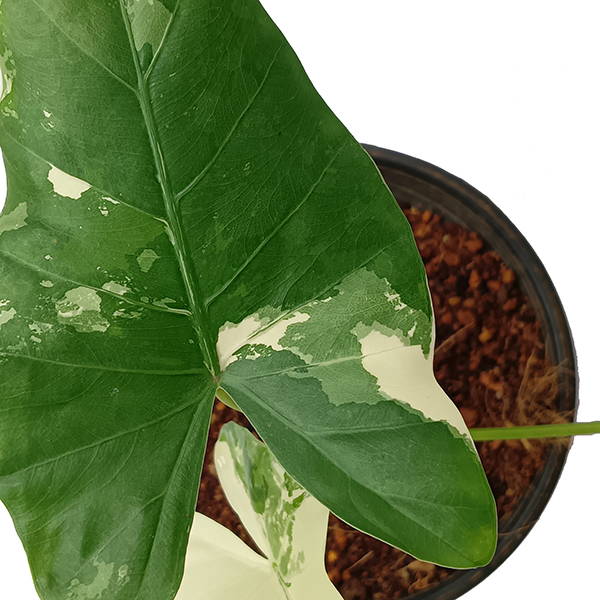
Common Name: Airplane Plant, Ribbon Plant, Spider Ivy, Spider Plant, St. Bernard’s Lily, Hawaiian Spider Plant, Reverse Spider Plant
Botanical Name: Chlorophytum comosum (spp.), Family: Asparagaceae
The graceful, arching leaves of the Spider Plant make it a staple of plant design. The long green leaves gently taper to a point and often feature white variegated stripes that run the entire length of the leaf. When grown in the right conditions, Chlorophytum comosum can grow rather quickly, so it can become a large, lush plant that adds plenty of style and greenery to a space. This is a versatile houseplant that will look amazing perched on a mantle or high shelf, dangling in a hanging planter, or gently cascading from an end table. A distant cousin of the lily, Spider Plants are initially from the warm climates of South Africa. These hardy houseplants are popular mostly due to their easy-going nature. Chlorophytum comosum are very adaptable, making them one of the best indoor plants for beginners or forgetful plant owners. If you still need convincing about just how great Spider Plants are, then consider that these houseplants are pet-safe, making them a great option for pet owners. Although, dangling spiderettes may be tempting for curious cats, so be mindful of placement if the plant begins to self-propagate.
Light
Part of what makes the Spider Plant so easy to care for, is it’s adaptability. Chlorophytum comosum can handle low, medium, or bright indirect light. When placed in a dim corner, Spider Plants will grow slowly. If placed in bright indirect light, the plant will really thrive. You can expect lots of wide arching leaves with plenty of variegation when this plant receives a high dosage of light. Keep the plant clear of direct sunlight which will burn the leaves.
Water
Chlorophytum comosum has medium water requirements. A mature Spider Plants will develop tuberous roots that are used to store water. This houseplant definitely likes to dry out a bit, so wait until the top few inches of soil are dry before watering.
Soil
Spider Plants love loose, nutrient-rich potting soil. Use a soil medium that can retain moisture but also allows for draining excess water to avoid root rot. Most pre-mixed soils will suffice. Make sure that there is plenty of organic matter, like coco-coir, peat moss, or shredded leaves, and avoid soils that contain moisture retaining crystals. If your soil drains too quickly, we recommend re-potting your chlorophytum into a compost-rich soil mixture, with less drainage materials. Learn how to create your own universal soil mixture for all of your indoor plants!
Temperature
This plant is native to warm climates and as such, Spider Plants thrive in comfortable room temperatures between 60-80°F. Anything below 50°F could be potentially harmful.
Humidity
Spider Plants like high humidity and will be right at home in a room with extra dampness in the air, like a kitchen or bathroom. Although, these houseplants do well in medium humidity. Dry air may cause the leaves to form brown edges. Placing the plant in an area with slight dampness can help prevent that from happening.
Fertilizer
Use a diluted complete liquid fertilizer during the spring and summer when the plant is growing. Take a break from feeding the houseplant during the colder months.
Pro Tips
Chlorophytum comosum are completely content being root-bound. Keep in mind that as the plant becomes root-bound it may need to be watered more often. If you find your Spider Plant needs to be watered more than once a week or if you see large, tuberous roots peaking through the top of the soil then it is time to re-pot.
Spider Plants propagate themselves either through division or by sending out runners or pups, commonly known as spiderettes. A Chlorophytum comosum that has outgrown its pot can be separated into multiple plants when re-potted. Try to avoid re-potting a Spider Plant with pups. The spiderettes will form roots if placed on top of soil. Once the spiderette has developed into its own plant the runner attaching the pup to the mother plant can be removed.
Spider Plants are notorious for forming brown tips. This can be caused by too dry of an environment, too much water, or watering with tap water containing high levels of salts, chlorine, minerals, or fluoride. Brown tips can be trimmed away. Prevent brown tips by either increasing the humidity, fine-tuning the watering, using filtered water, or filling a watering can with tap water and letting it sit for 24 hours so salts or chemicals can dissipate.





